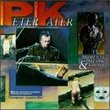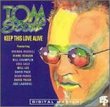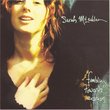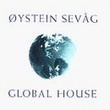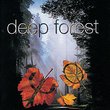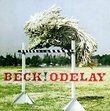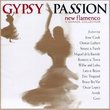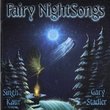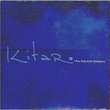| All Artists: Brainscapes Title: Brainscapes 2001 Members Wishing: 0 Total Copies: 0 Label: Cyber Octave Original Release Date: 11/21/2000 Release Date: 11/21/2000 Genres: Dance & Electronic, New Age, Pop Styles: Meditation, Dance Pop Number of Discs: 1 SwapaCD Credits: 1 UPCs: 724385040221, 0724385040252 |
Search - Brainscapes :: Brainscapes 2001
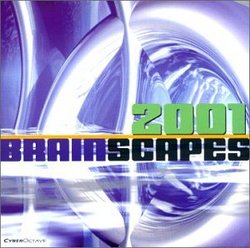 | Brainscapes Brainscapes 2001 Genres: Dance & Electronic, New Age, Pop
|
Larger Image |
CD DetailsSimilarly Requested CDs
|
CD ReviewsBrainscapes 2001 Ch D | hlnd | 12/12/2000 (5 out of 5 stars) "BRAINSCAPES BRAINSCAPES 2001In 2001: A Space Odyssey, visionary film director Stanley Kubrick charted new cinematic terrain as he took viewers on a psychedelic trip into the 21st century. With Brainscapes 2001,visionary Dutch musician Alain Eskinasi similarly employs new musical sounds and forms to take listeners on a sonic journey into the new millennium. If Kubrick's astronauts had happened upon a nightclub in the year 2001, this is the kind of music they might have sampled.This is the third Brainscapes recording to emanate from the Amsterdam studio of this prolific composer, arranger, keyboardist, guitarist and percussionist. The first two dealt with,respectively, music's effects on the brain and the emotions.Call them sound collages where ambient, trance-dance and meditation music meet in seductive and mysterious ways. His latest project distills elements from the first two records, but adds an uptempo dance aesthetic to the mix. The music is still imbued with a mesmerizing, otherworldly quality, but is now layered with an infectious groove that moves the feet as it uplifts the spirit. Says Eskinasi, "After doing two mellow albums and working so much with African and Smooth Jazz projects (including the legendary group 3rd Force), it was time to apply some more groove to my own work. The third Brainscapes album is quite different than the first two. It1s not based on a healing music theory (as was Chakradancer), but is designed to provide dance music with a melody, and with more depth than the electronic trance that has pretty much taken over the European dance scene." >From the throbbing opening bars of the first track, "Sweet Thing," Brainscapes 2001 lives up its creator's billing as intelligent dance music. Eskinasi lays down an aggressive percussive vibe overlaid with a sinuous, haunting melody that's limned by a bewitching combination of keyboards, wordless vocals and flute. This infectious groove plucks the listener out of his easy chair and places him firmly in a first-class seat on Eskinasi1s pulsating musical express.All the tunes reflect this unique combination of rhythmic density and melodic invention, ranging from the sweet and mellow "Rainbow Serpent" to the adrenaline-paced, cyberpunk-raver"The Time is Now." Underscoring the entire project are the electronic effects that Eskinasi delights in creating. But the warm and soulful manner in which they are used belies the typical image of the electronic artist plinking away in some ivory techno tower."For digital soundscaping I use a software package called metasynth that enables me to create sounds unheard before on this planet," Eskinasi explains. "Some of the things you hear on this album sound like synthesizers, but are actually acoustic sounds I processed, while some of the sounds you think are acoustic are actually placed with my solosynths. This is how I do my brass sections, flutes and didgeridoos." Much of the album's warmth and a good deal of its world music ambience is derived from actual acoustic instruments. For example, guest musician Kailash contributes the soulful Native American flute playing heard on "Sweet Thing," while the track "Fujara" features an ancient European oversized flute with three sound holes that produces a tone distinctive for its plaintive, almost human quality.Then there are the numerous sound samples that Eskinasi skillfully stirs into the mix. "I'm a self-confessed soundhound, and I'll hear musical possibilities in almost every sound our planet has to offer," he says. On Brainscapes 2001, those samples include flutes; various percussion instruments; guitars and sitars; Asian, Gypsy and Gregorian chants; and, serendipitously, an infant's first attempts at speech."My daughter Tara, who was born in 1999, was with me in the studio when she was three months old, making sounds as babies do," Eskinasi relates. "As a proud daddy, I recorded some of her burblings." This recording became a sample, which inspired the poignant, softly grooving "Tara's Melody." Also appearing on this track are samples of Rob Berends' saxophone and Natalia Gotbolt's vocals. Berends is a longtime friend and collaborator of the composer. Gotbolt is an Australian musician Eskinasi discovered singing in the streets of Amsterdam back in 1993. Her melodic gifts are also heard to advantage on several other cuts. What's remarkable about the samples is how organically Eskinasi incorporates them into his songs. They don't sound like samples, but rather, through some strange alchemy, as if they were captured live in the studio. This is yet another aspect of the music that sets it apart from that of other musicians.As comfortable as Eskinasi is in his studio, where he is free to focus on and develop new musical ideas, he also relishes the challenge of performing live. Audience feedback provides crucial inspiration, as does the live interaction with other musicians. Eskinasi recalls a jam session he played with a group of Japanese players, "We couldn't speak a word of each other's language, but we got it together and talked with our instruments." That scenario is indicative of the wide variety of musical settings in which Eskinasi earned his chops. He studied for years in Gambia, West Africa; played with the Soto Koto Band and with Professor Trance & the Energizers; and has recorded well-received solo albums. The Brainscapes series grew out of yet another collaboration, dating back to 1991, with Australian musician Jim Wafer, who was since gone on to other pursuits. Happily, there are further Brainscapes projects in the works, "I'm working with DJ Fausto, who's also from Amsterdam, creating Trance and House music for the Dutch and British club scenes," Eskinasi says. "And I'm looking forward to preparing another 3rd Force album next year with my friends William Aura and Craig Dobbin."But for the moment, it's the present CD that is turning listeners on to the soulful possibilities inherent in the new millennium. With so much of what passes for music these days providing little more than wallpaper for the ears, it1s refreshing to witness a musician like Alain Eskinasi who's not afraid to reveal real human emotion and a Jazz-based sensibility allied to a rigorous, cerebral musical plan.The joyful groove of "Organica" perhaps best reflects the album's aesthetic. With its ascending harmonies and relentless rhythmic thrust, it1s like a soulful sonic waterfall that heralds a new direction in electronic sound. Eskinasi sums it up this way: "The new album illustrates how music and style comprise a universal language, one that transcends race, culture and language." Hal 3000 couldn't have said it better." Wow, this is a lot of fun from quiet to trance/dance Guardian of the Zen Sea | Looking after the sun and surf | 12/06/2000 (5 out of 5 stars) "I have the previous two Brainscapes releases, and I will warn you that this one is not like the others. This CD is more trance/dance beat oriented, using fuller synth instrumentation and more overdubs. That said, it is still a real kick to listen to! The music has a nice, mellow beat with tasty vocal dubs to fill it out. The first two cuts, "Sweet Thing" and "Sumanja" will give you a feel for the more beat-oriented tunes. Number three, "Sangita Sangita" is closer to some of the earlier releases, and has an "Enigma-like" use of chant-type vocals in the background contrasted with the eastern stylings of the lead vocalist, Natalia Gotbolt. Track four, "Organica" sounds almost retro-German synthesized, with an overriding, clockwork like beat. Other cuts, such as "Rainbow Serpent" make use of digeridu, and have a more tribal feel. Track number 7, "Secret Valley" is dreamy, and has a guitar-like feel. Track 8, "Goa Trance" is most trance-like, and is the longest cut. It uses a nice backbeat with synth overdubs that are hard to listen to without dancing--great road trip music. Then there is cut number 11, "Tara's Melody" which has a distinctly jazz-lounge feel to it. So you see that the music is hard to categorize. All in all, the album works, but as a trance/dance CD, not a quiet meditative trip like the first two CDs. Listen to the samples, there is a enough music even in 30 seconds to give you a feel for the CD."
|

 Track Listings (12) - Disc #1
Track Listings (12) - Disc #1